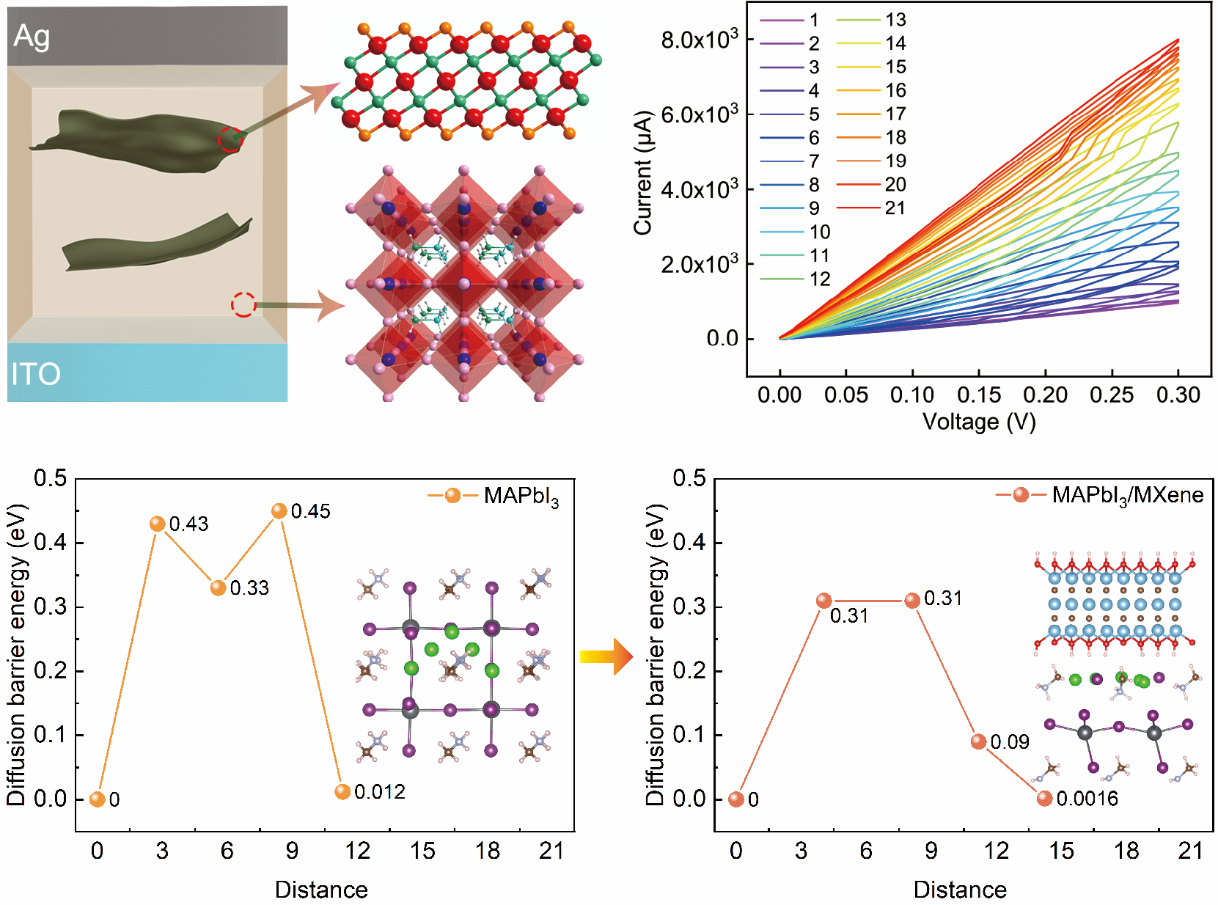On April 29, 2025, Zhou's team published a paper entitled "Incorporating MXene in Perovskite for Modulating Ion Migration and Enhancing Object Detection" inAdvanced Functional Materials. This research paper explores Perovskite memristors. Wenbiao Niu is the first author. Ye Zhou and Guanglong Ding are the corresponding authors.
Perovskite memristors hold promise for next-generation computing devices due to their potential for in-memory computing. However, they face challenges in practical applications owing to high power consumption, limited resistance tunability, and complex conduction mechanisms primarily caused by the uncontrollable ion migrations. In this study, Ti3C2TxMXene nanosheets are incorporated into the methylammonium lead iodide (MAPbI3) based memristor to modulate the migration behaviors of iodine (I−) and silver (Ag+) ions. Ti3C2Txcan decrease the Ag+ions migration barrier from 0.45 to 0.31 eV, which is induced by the closer lattice distance and lower charge transfer barrier thanks to the bridging effect between Pb2+and the surface functional groups of MXene. Thus, lower operating voltages can be achieved. On the other hand, MXene can also serve as a “reservoir” for the accumulation of I−ions, leading to gradual ion migration and stable multiple resistive states under repeated voltage stimulations. Herein, Ag+and I−ions migration processes are considered to dominate the digital and analog switching behaviors of the device, respectively, enabling the applications in both data storage and neuromorphic computing with long retention time (>105s), high device uniformity, multiple distinguishable resistance states (21 states), and high object detection accuracy (98.9%). The research was supported by the National Natural Science Foundation of China, the Basic and Applied Basic Research Foundation of Guangdong Province, the Science and Technology Innovation Commission of Shenzhen, RSC Researcher Collaborations grant, the State Key Laboratory of Radio Frequency Heterogeneous Integration (Independent Scientific Research Program), etc.
Original link:https://advanced.onlinelibrary.wiley.com/doi/10.1002/adfm.202501877



